Cruising the Kinabatangan River
Spotting beautiful and endangered flora and fauna on our 3-day tour in the primary rainforests of Borneo
COUNTRIES
Do any of you remember Amazon Trail? Well we were off on the Amazon trail, except not in the Amazon and not a trail but a river, and not a video game but real life. And no paranahs. But we were headed to one of the only virgin rainforests left in the world, the only others being in the Amazon. We took the shortest flight I've ever been on, just 35 minutes, from KK to the small town of Sandakan in far north Borneo. The flight departed bright and early so we could arrive in time for the start of before our multi-day tour at 8AM. This was our first organized tour of the trip and would be a three day, two night stay along the Kinabatangan River. Back home, our friends Micki and Bob S. had shared stories of the wildlife they saw traveling in this area when Bob was brought here for riverine research. It inspired me to try and find these beautiful wild animals...while there are still some of them left.1 The goal: see the famed Proboscis monkey, as well as the quickly disappearing orangutans and other native wildlife. Our tour started at the Sepolik Orangutan Sanctuary, where we arrived in time for breakfast (theirs, not ours), seeing several of the majestic species from a relatively short distance. These young ‘tans are all rescues and nursed back to life and, in some cases, re-released into the wild. They were very cute indeed, swinging lithely from both their hands and feet as they went for the snacks; surprisingly they were much more into the served up cabbage leaves than bananas!!
After hanging with the orangutans and a long lunch break, our driver whished us onward two hours further into the country, past acres and acres of palm tree farms until finally arriving to our Ecolodge, Sukau Greenview Lodge at the edge of a tiny town along the Kinabatangan River between two sanctuary areas. Our itinerary included a sunset, night, and sunrise nature cruise, all of which featured an array of wildlife. We dropped off our bags and headed to the boat for our first foray into primary Bornean Forest. Our guide, Rex, was incredibly knowledgeable and spotted wildlife faster than you can say monkey. That first evening we saw several types of birds, the common long-tailed macaque ("gangsters" of the forest according to Rex) and several groupings of proboscis monkeys2. The proboscis monkeys are endemic (aka only found in) this region of Borneo, and live either in small groupings of bachelor males or larger groupings of “harems” of a dominant male, females, and youngins. They are handsome, orange and white, and have extraordinarily long noses, which are their namesake. After the tour, the kind but quiet lodge hostess served us a simple dinner of rice, a stew with dark meat chicken, and eggs.
After a short break in the luxuriously cool dry air-conditioning of our room, we were off again in the dark. Rex brought a powerful flashlight this time, scanning with incredible speed along the dark treed shores. How he was able to pick out many of the creatures along the river was awe inspiring, but within minutes we were pulling up within feet of the shore, a sleeping bird or snake or monkey in the center of the spotlight. In this way we saw beautifully colored kingfishers (blue ear and stock bill varieties), then a White throated water hun, black and red broadbills, an oriental hornbill, and a night heron, each amazingly close and very still as they slept. We also saw a small Malayan brown dish snake twisted around a branch. And then…the back crests and eyes of a giant saltwater crocodile, at least six feet long, in a small inlet along the shore, waiting motionless for an unfortunate monkey to fall or jump into its grasp. As we returned home, we also spotted several Flying Foxes, fruit bats the size of hawks winging across the sky.
The next morning, we rose with first light and surrounded by mist for our third boat ride. This time we saw more and larger birds: the white bellied sea eagle, brown night owl, and a group of bushy crested hornbill, each perched on the highest branches of the trees, drying out their feathers from night-time rain. We saw more forest gangsters, proboscis monkeys and a new monkey, the silver leaf languor. And then, cruising down a side stream of the river, a guide in a boat in front of us pointed and gave a thumbs up. There, emerging from his night nest of leaves3, was a small red orangutan, less than 20 feet away. He looked up and then slowly swung away into the undergrowth. Rex told us he hadn’t seen an orangutan since May this year, and that in general since the COVID shut-down4, guides have seen very few of them. They are not yet sure why, if the orangutans moved on, changed behavior, or were more heavily illegally hunted during the shut-down. Either way, we were incredibly lucky to see this guy, and to see him so close up was magical.
Later that day, Shadie skipped out on me for a brief trek on foot into the jungle. He also missed out on the leaches (I got 2 of them) and the giant millipede I saw. He was strangely not jealous that he didn't come...
Our first day and a half was an accidentally private tour as we were the only guests, but on day two we were joined by two retired Americans ladies and a Russian gentlemen based in Bali. We shared a group dinner by the riverside after the sunset cruise, sharing life stories and travel advice. The Americans were quite the personalities, bantering with Rex, sometimes doubting his identification of birds, and begging for larger noses on the proboscis monkeys. They also had amazing stories to tell of scuba diving all over the world and told us to live life the fullest as they now had “more money than time.” Our next day would be (you can probably guess) an early one, with a 6 am return shuttle to the airport (far earlier than our flight). For a tiny three gate airport, we found ourselves perfectly comfortable at a Starbucks (again, ironic given there were maybe three shops total in the entire building), where we had a video call with my family and took some time to plan our upcoming weeks. Our next stop would be brief (36 hours) in Kuala Lumpur. The best line was our 4-year-old nephew Landry asking if this is where we see the Koalas given the name.
Footnotes:
1) As I work in the climate field, I sometimes skew towards pessimism more than I'd like on environmental issues. But the reality is that we've already lot the vast majority bio-diversity that existed just a few hundred years ago, and ecosystems of Borneo are among the most threatened in the world. In fact, our tour guide, who may also skew towards morbid(?) kept telling us we were lucky, checking off so many of the "Big Five" of Borneo--aka animals people come all this way to see. What are they? Orangutans, saltwater crocodiles, proboscis monkeys, Indonesian elephants, and...rhinos. The last Indonesian rhino died some five years ago and is extinct. Of the remaining four, all but the salt water crocodile are critically endangered.
2) Rex shared a couple additional cool facts about these very handsome proboscis monkeys. Firstly, the females are indeed more attracted to larger noze males (obviously). second, the monkeys feature cute rotund bellies, because these guys have two stomachs, one of which is able to digest certain types of leaves that are poisonous for most other creatures. They are also strong swimmers and hang in the trees along the river because jumping in the water is a main escape route from their natural predators: jaguars and snakes.
3) Orangutans are apparently the only major primate that frequently make leaf beds for themselves. They make the nests from leafy branches twice a day, and its these nests that many of the guides look out for to know if the orange guys are around. Orangutans are also the only large primate to live mostly solitary lives, so you rarely seem them together with others.
4) Rex and the other staff didn't share too much about their lives but most of them were from this area. Rex pointed out his house along the side of the River. He also share a little bit just how difficult the COVID shut-down had been for this community. Eschewing the destructive palm tree growing industry destroying the ecosystem of their home, Rex and his community relied solely on tourist dollars. He said, they had sold many things they owned to survive, including one of his prize possessions to be successful at work: a pair of powerful binoculars worth more than $6000 dollars (a huge sum in Malaysia) he had been forced to sell for less than $1,500. This story made me ponder anew the cost-to-benefit math the world's leaders took on when they shut down the global economy to fight the disease.
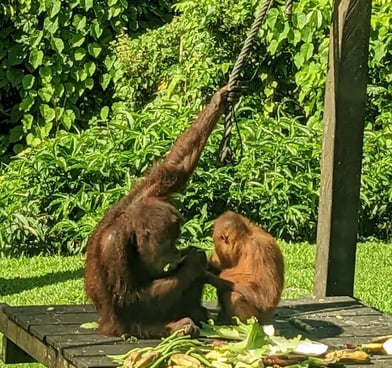

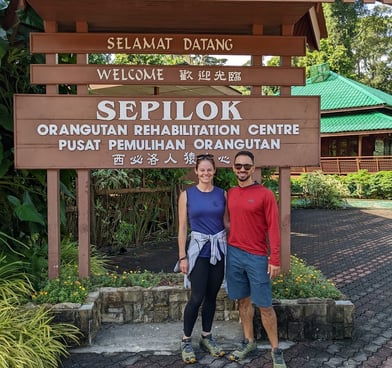

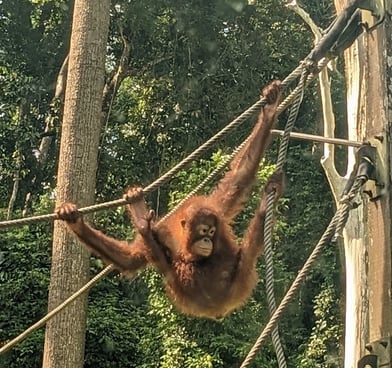

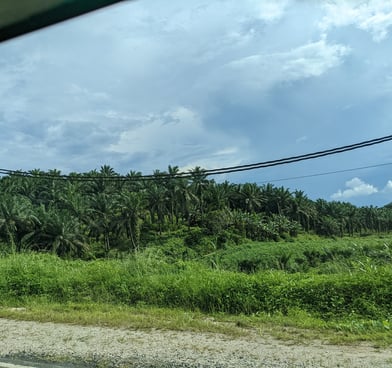

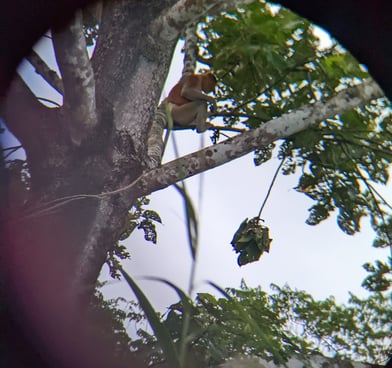

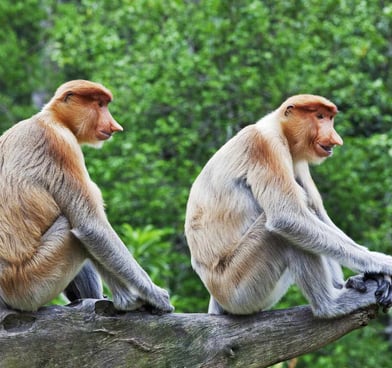

Y'all deserve better images of all these beautiful animals than my cell phone camera could capture so I'm including internet photos. Credit: John W Banagan / Getty Images
On the road to the river, we saw endless fields of monoculture palm plantations.
One big-nosed male proboscis monkey we snapped a shot of through binoculars.
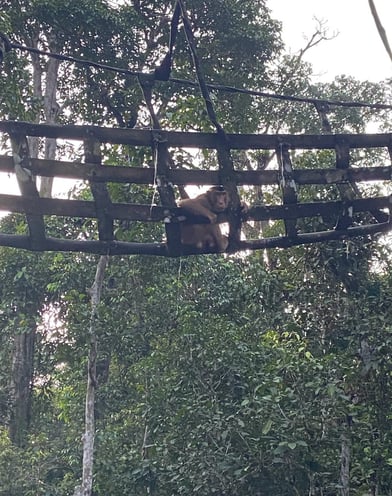

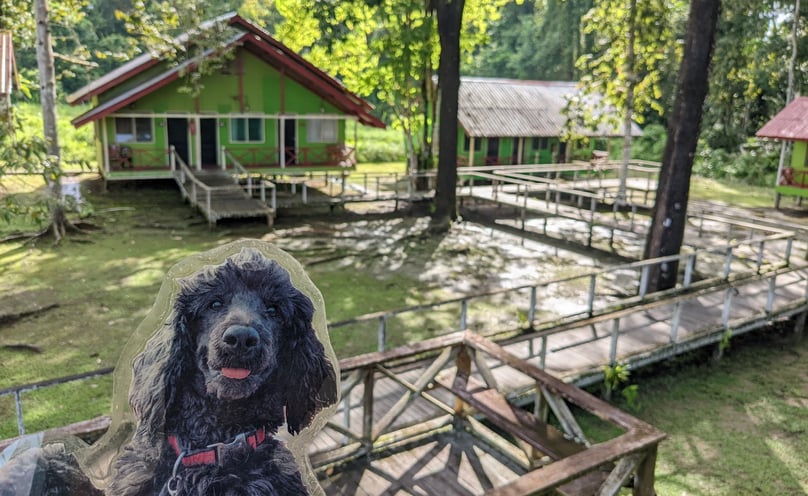

The long-tailed macaque may be a pesky thief but they sure are cute frolicking on this rope bridge left for them by the conservation department.
Stand-up Winnie enjoyed Sukau Greenview Lodge, as did we. There was a main building that was the kitchen/dining area, and separate cabins with boardwalks out to them to account for the monsoon rains that were getting started while we were there. Quite comfortable really.
These youths were super into what looked like long beans and chinese cabbage.
The Sepilok preserve seemed very well run and was quite beautiful.
Man if only I could have such dexterous toes!
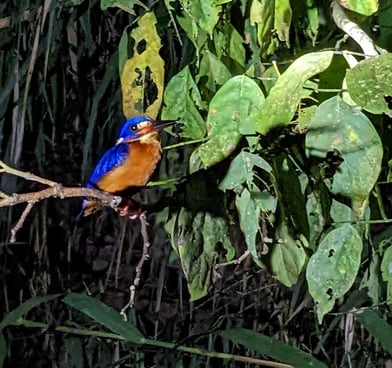

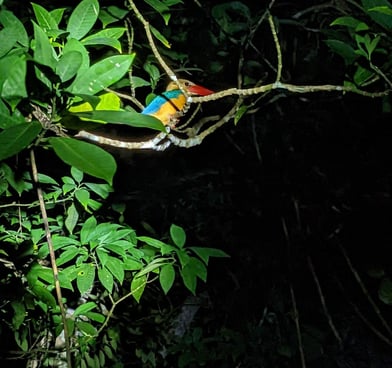

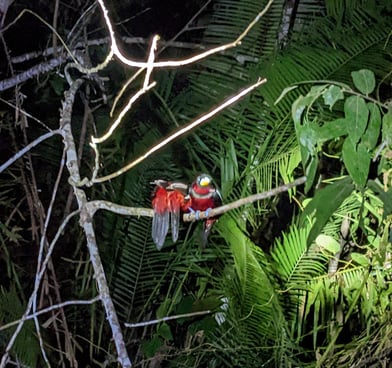

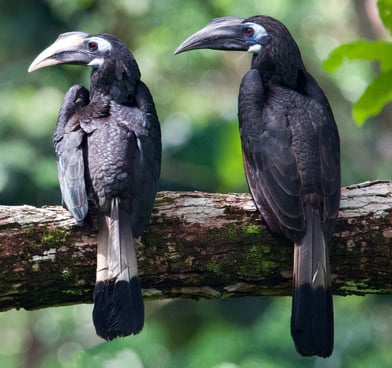

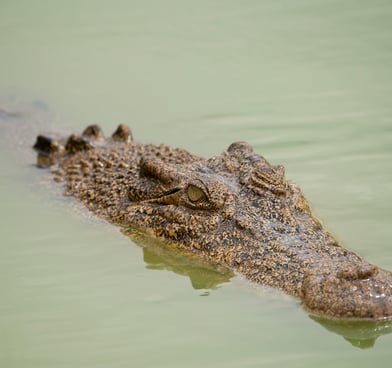

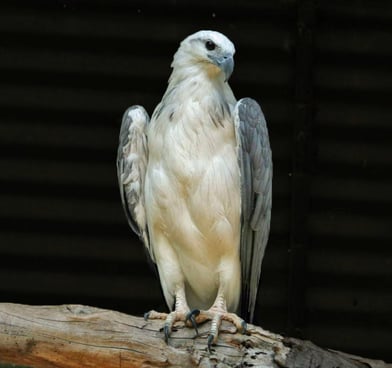

We several pairs of bushy crested hornbills © Ayuwat Jearwattanakanok
Our saltwater croc was at least 6 ft long and kept just his eyes and back spines above the water. Lui Sykes/Alamy Stock Photo
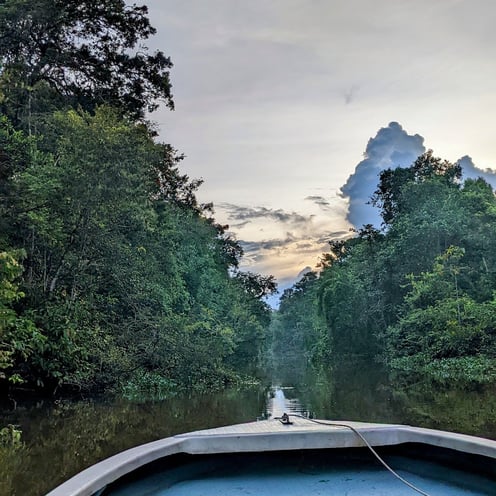

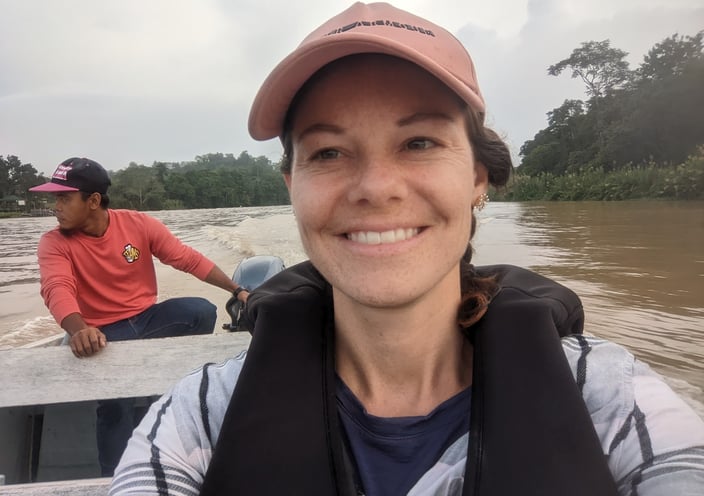

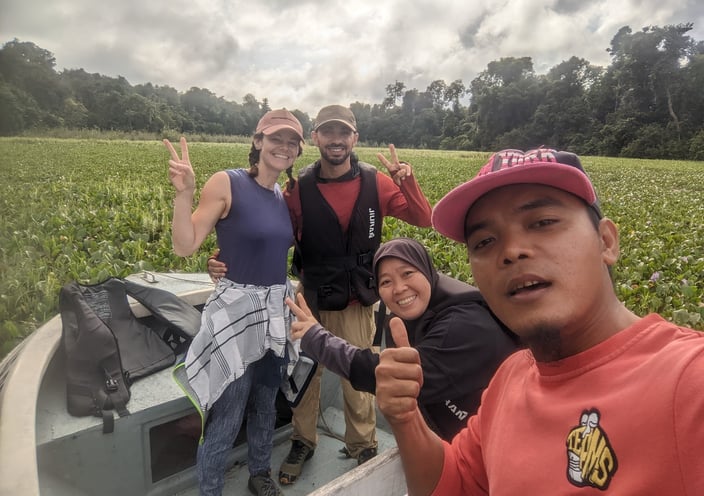

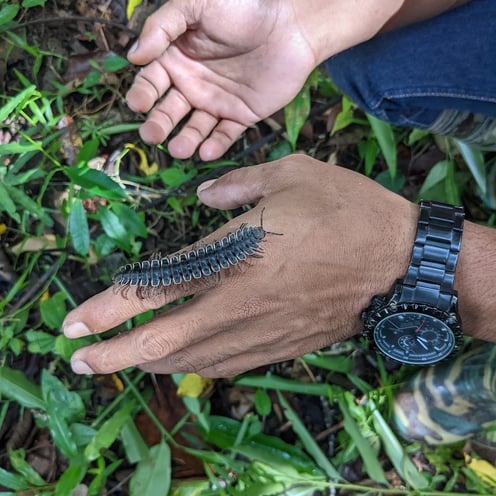

This blue-eared kingfisher blinked at us under the strong flashlight, but didn't move.
Elegant, and just about the same size as, our baldies, the white bellied sea eagles were cool to see. Wikimedia commons.
A smaller branch off the Kinabatangan River, beautiful after the rains passed by.
Enjoying the ride, while Rex spots more wildlife for us.
A happy crew right after seeing the orangutan.
That giant millipede that I did not want to hold.
Stock billed kingfisher. We saw several. So pretty.
Black and red broadbills nestled up next to each other.
